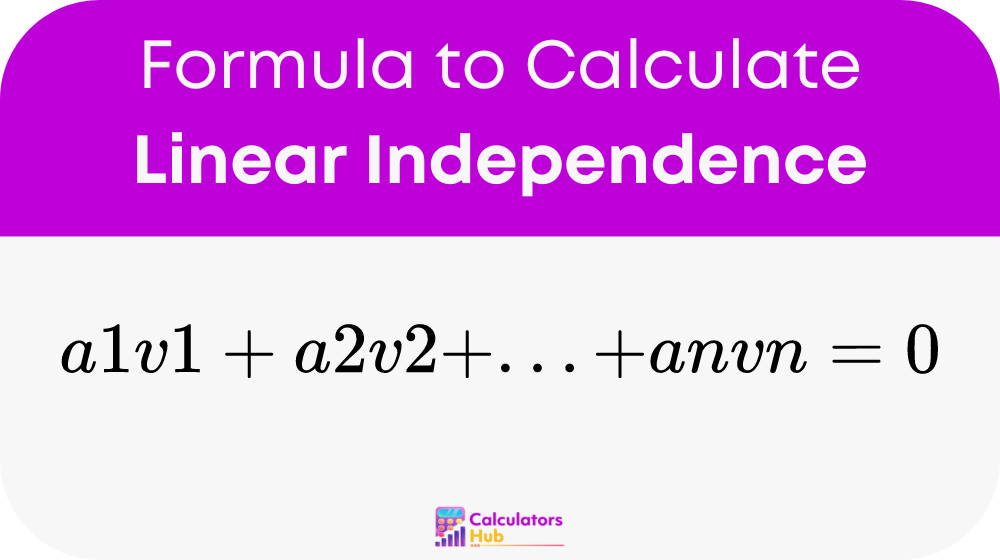The Linear Independence Calculator is a specialized computational tool that helps users determine whether a given set of vectors are linearly independent. Linear independence of vectors means that no vector in the set can be written as a linear combination of the others. This is crucial for various applications in mathematics, engineering, and science, such as solving linear systems, transforming coordinates, and more.
Functionality:
- Input: Users enter the components of vectors.
- Process: The calculator examines the vectors using matrix operations (like row reduction) to determine if the set spans the vector space without depending on each other.
- Output: It provides a straightforward answer — either confirming that the set is linearly independent or specifying which vectors are dependent.
Understanding whether vectors are linearly independent or dependent helps in various analytical and practical applications, including simplifying systems to find bases for vector spaces and ensuring the stability of solutions in numerical methods.
Formula
Mathematically, a linear combination of nn vectors is written as:

where:
- ai are coefficients (weights)
- vi are the vectors
For linear independence, we need to solve this equation and check if the only solution is the trivial one (all aiai are zero). If any aiai can be non-zero while this equation still holds, the vectors are linearly dependent.
Conversion Table
The following table includes commonly used terms and their definitions which aid in understanding and utilizing the Linear Independence Calculator effectively:
| Term | Definition |
|---|---|
| Vector | A quantity defined by both magnitude and direction. |
| Linear Combination | A sum of scalar multiples of vectors. |
| Trivial Solution | A solution where all variables (coefficients) are zero. |
| Non-trivial Solution | A solution where at least one variable (coefficient) is non-zero. |
| Span | The set of all possible vectors that can be created using linear combinations of a given set of vectors. |
| Basis | A set of vectors that, being linearly independent, span a vector space. |
Example
Problem: Determine if the vectors v1 = (1, 2, 3), v2 = (4, 5, 6), and v3 = (7, 8, 10) are linearly independent.
Solution:
- Form the matrix with vectors as columns: [ 1 & 4 & 7 2 & 5 & 8 3 & 6 & 10 ]
- Perform row reduction: [ 1 & 0 & -2 0 & 1 & 2 0 & 0 & 0 ]
- Analyze the row-reduced matrix:
- The third column is a linear combination of the first two columns (no pivot position in the third column).
Conclusion: The vectors v1, v2, and v3 are linearly dependent as the third vector can be expressed as a combination of the first two.
Most Common FAQs
A1: If vectors are linearly dependent, at least one of the vectors in the set can be expressed as a combination of the others. This implies redundancy in the vector set, affecting the basis and dimension of the vector space they span.
A2: This calculator helps by providing quick and accurate assessments of vector relationships, crucial for solving systems of equations in physics and engineering, and for optimizing processes that involve multiple, interacting variables.
A3: While highly effective, the calculator requires exact vector inputs and may not handle symbolic representations. It is also limited to computational capabilities and might not provide detailed explanations for dependency scenarios.